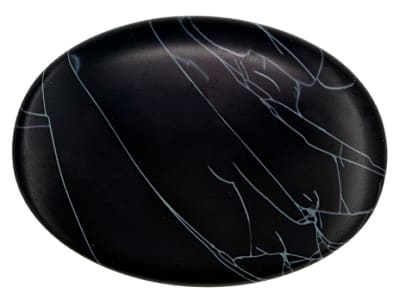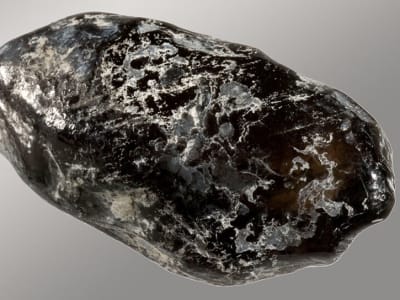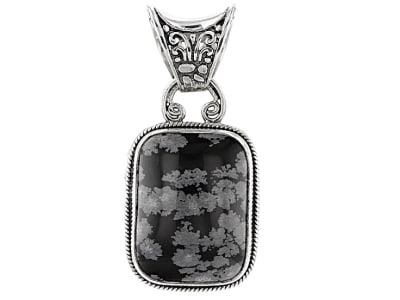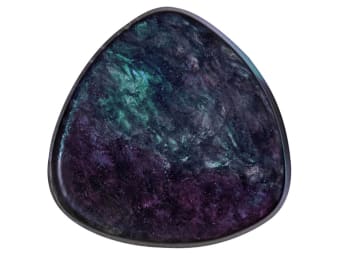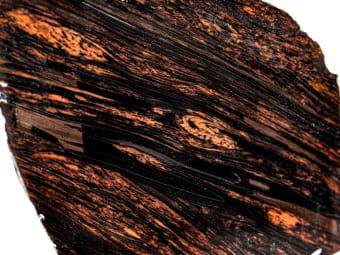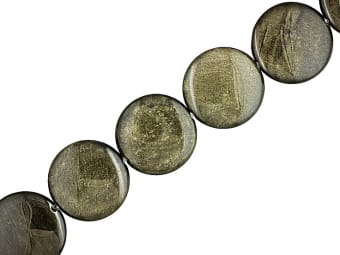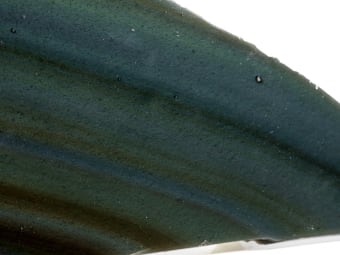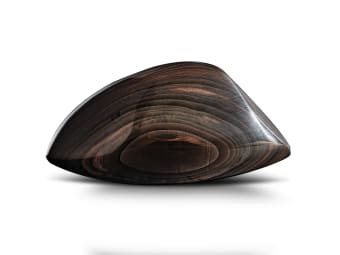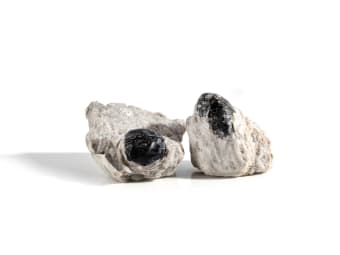Obsidian has been used since the Stone Age for tools, weapons and as an ornamental material. It is used in modern times for scalpel blades. Obsidian is formed by the rapid cooling of viscous lava due to volcanic explosions. It consists of the same minerals as granite but cools so quickly that they do not have time to crystallize. Obsidian has a glassy luster and is usually black or very dark green, but it can also be found in an almost colorless form.
General Information
Tolerance:(+0.020/-0.010)
LWUV: Inert
Obsidian Colors
-
 Black
Black -
 Brown
Brown -
 Gray
Gray -
 Green
Green -
 Multi-color
Multi-color -
 Multi-color
Multi-color -
 Red
Red -
 Yellow
Yellow
Alternate Names
Banded Obsidian, Onyx Obsidian, Sheen Obsidian, Snowflake Obsidian, Rainbow Obsidian, Apache Tears, Mahogany Obsidian
Countries of Origin
Papua New Guinea; Russian Federation; Czechia; United States of America; Madagascar; United Kingdom of Great Britain and Northern Ireland; Portugal; Iceland; Armenia; Greece; El Salvador; Morocco; Unknown; China; Brazil; Guatemala; Poland; Slovakia; Chile; France; Colombia; Ecuador; Argentina; Romania; Hungary; Uruguay; Japan; Kenya; India; Spain; New Zealand; Azerbaijan; Canada; Turkey; Italy; Mexico; South Africa; Antarctica; Georgia; Australia; Peru; Indonesia
History
Because of its conchoidal fracture obsidian is an excellent material for spearheads, knives and arrowheads. In 1995 an obsidian bracelet that dated from 7500 BC was found at an archeological site in Aşıklı Höyük, Turkey. This bracelet shows superior craftmanship not known before the discovery of this artifact.
Care
Avoid heat, chemicals, and ultrasonic cleaners.
Species/Variety
Spiderweb Obsidian
Spiderweb obsidian comes from Guadalajara, Mexico. The material is dark blue and is named for the light blue veins that look like spider webs running throughout the stones.
Velvet Obsidian
Velvet obsidian is a rare form of obsidian that comes from Mexico that resembles crushed velvet. It is also known as peacock obsidian when the colors in the stone mimic the appearance of a peacock's tail.
Mahogany Obsidian
Mahogany obsidian can be identified by its red and black bands. The color is thought to come from hematite or iron impurities. The material is similar in appearance to the mahogany variety of wood. Most mahogany obsidian comes from Mexico.
Snowflake Obsidian or Flowering Obsidian
Snowflake or flowering obsidian contains white patches of cristobalite inclusions on a black background. Most material is found in Utah or Wyoming in Utah.
Sheen Obsidian
Sheen obsidian can have a silvery or golden looking sheen caused by linear trails gas bubbles throughout the stone.
Macusanite Obsidian
Macusanite obsidian is a pale yellow to greenish obsidian from Macusani volcanic field Carabaya Province of Peru.
Onyx Obsidian
Onyx obsidian is obsidian with straight, parallel bands.
Rainbow Obsidian
Rainbow obsidian comes from Mexico and it is named for the rainbow colors it displays. The rainbow appearance comes from thin-film interference due to inclusions of oriented nanorods of hedenberite.
Fire Obsidian
Fire obsidian is a variety of iridescent obsidian, that comes from Southeast Oregon, that displays vibrant colors and patterns. The color is caused by thin-film interference due to thin layers of concentrated nano-crystals of magnetite.
Apache Tears
Apache tears are small, rounded irregularly shaped obsidian nodules found in the American Southwest typically in Arizona and New Mexico. They are dark gray to brownish or greenish black. Apache tears are said to be the preserved tears of the Apache women who lost their beloved warriors in battle.
